A Guide to the Best Varieties of Redbud Trees to Plant in Your Garden
Published: November 13, 2025 at 7:46:13 AM UTC
Redbud trees are among the most enchanting additions to any landscape, offering spectacular spring blooms that emerge directly from their branches before the leaves appear. These ornamental trees create a breathtaking display of pink, purple, or white flowers that herald the arrival of spring like no other. Beyond their stunning blossoms, redbud trees provide heart-shaped leaves that shimmer in summer breezes and transform into golden hues in fall, offering multi-season interest to your garden.
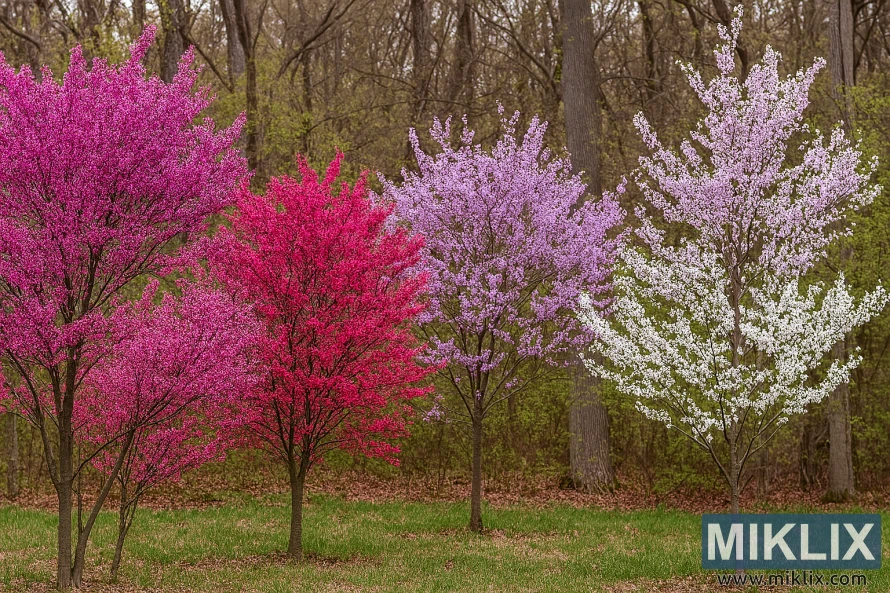
Whether you're looking to add a focal point to your yard, create a natural privacy screen, or simply enjoy the beauty of flowering trees, redbud varieties offer versatile options for gardens of all sizes. In this comprehensive guide, we'll explore the most popular redbud tree varieties, their unique characteristics, and essential care tips to help you select the perfect specimen for your landscape.
Eastern Redbud (Cercis canadensis)
The Eastern Redbud is the quintessential native American redbud tree, beloved for its reliability and adaptability across much of the United States. This stunning deciduous tree bursts into life each spring with a profusion of magenta-pink flowers that emerge directly from its branches, creating a spectacular display.
- Botanical Name: Cercis canadensis
- Mature Size: 20-30 feet tall and wide
- Flower Color: Magenta-pink
- Blooming Period: Early spring
- Foliage: Heart-shaped green leaves turning yellow in fall
- Hardiness Zones: USDA Zones 4-9
- Growing Conditions: Full sun to partial shade; adaptable to various soil types
Eastern Redbuds are remarkably adaptable to different soil conditions and can thrive in clay, loam, or sandy soils. They prefer well-drained locations but can tolerate occasional drought once established. The heart-shaped leaves emerge after flowering, starting with a reddish tinge before maturing to a rich green in summer and finally turning yellow in fall.
This variety is perfect for woodland gardens, as understory trees, or as focal points in residential landscapes. Their moderate size makes them suitable for smaller yards while still providing significant visual impact.
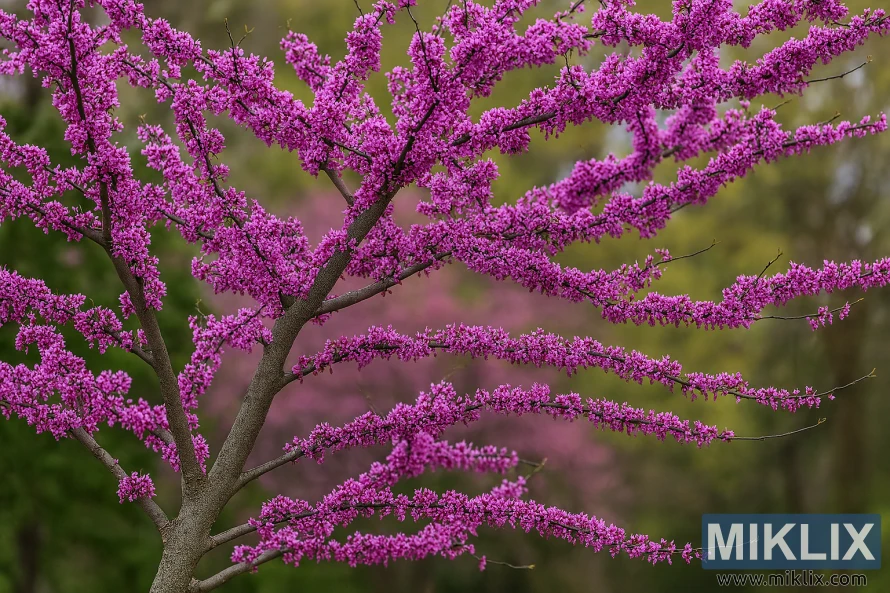
Forest Pansy Redbud
The Forest Pansy Redbud is a stunning cultivar of the Eastern Redbud that stands out for its extraordinary burgundy-purple foliage. This award-winning variety begins the growing season with vibrant pink-purple flowers in early spring, followed by heart-shaped leaves in a rich wine-purple color that creates dramatic contrast in any landscape.
- Botanical Name: Cercis canadensis 'Forest Pansy'
- Mature Size: 20-30 feet tall, 25-35 feet wide
- Flower Color: Pink-purple
- Blooming Period: Early spring
- Foliage: Heart-shaped burgundy-purple leaves that gradually turn green-bronze in summer
- Hardiness Zones: USDA Zones 5-9
- Growing Conditions: Full sun to partial shade; average, well-drained soil
The Forest Pansy requires a bit more attention than the standard Eastern Redbud. It performs best with consistent moisture and some afternoon shade, especially in hotter climates where intense sun can scorch the leaves. The purple color is most intense in spring and early summer, gradually shifting to a bronze-green as the season progresses.
This variety makes an exceptional specimen tree and creates a stunning focal point when planted against lighter backgrounds. Its unique coloration pairs beautifully with silver-leaved plants and creates dramatic contrast in mixed borders.
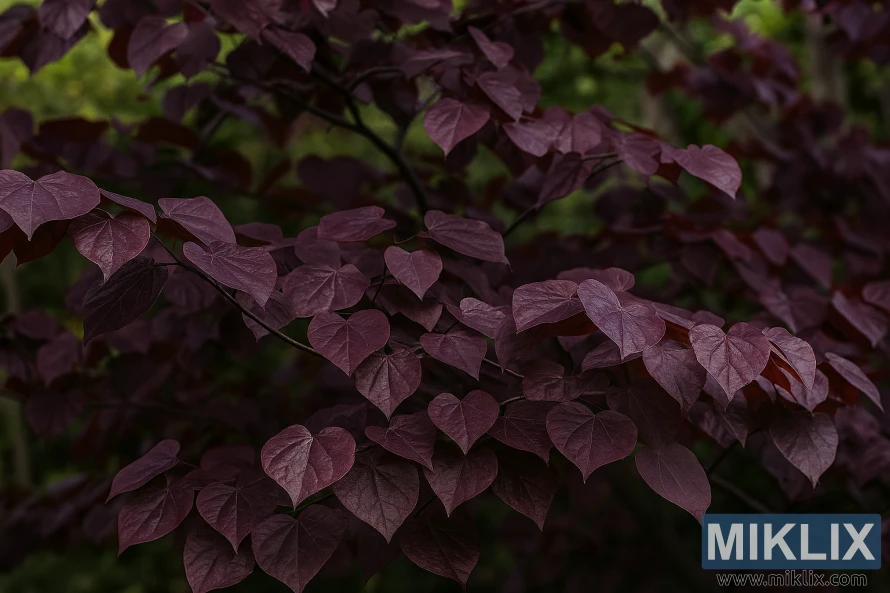
Rising Sun Redbud
The Rising Sun Redbud is a relatively new and increasingly popular cultivar that offers a truly unique color display. While it shares the characteristic pink spring flowers of other redbuds, what sets this variety apart is its extraordinary foliage. New leaves emerge in brilliant shades of golden-orange and apricot, creating a warm, glowing effect in the garden.
- Botanical Name: Cercis canadensis 'The Rising Sun'
- Mature Size: 12-15 feet tall, 15-20 feet wide
- Flower Color: Pink
- Blooming Period: Early spring
- Foliage: Heart-shaped leaves that emerge golden-orange, mature to yellow-green, with continuous new colorful growth
- Hardiness Zones: USDA Zones 5-9
- Growing Conditions: Full sun to light shade; well-drained soil
What makes the Rising Sun particularly special is that it continues to produce new orange-gold leaves throughout the growing season, creating a multi-colored effect as newer leaves contrast with the more mature yellow-green foliage. This continuous color show extends the ornamental interest well beyond the spring flowering period.
The Rising Sun has a more compact growth habit than standard redbuds, making it suitable for smaller gardens and spaces. It's an excellent choice for gardeners looking for a tree that provides multiple seasons of interest and unique coloration.
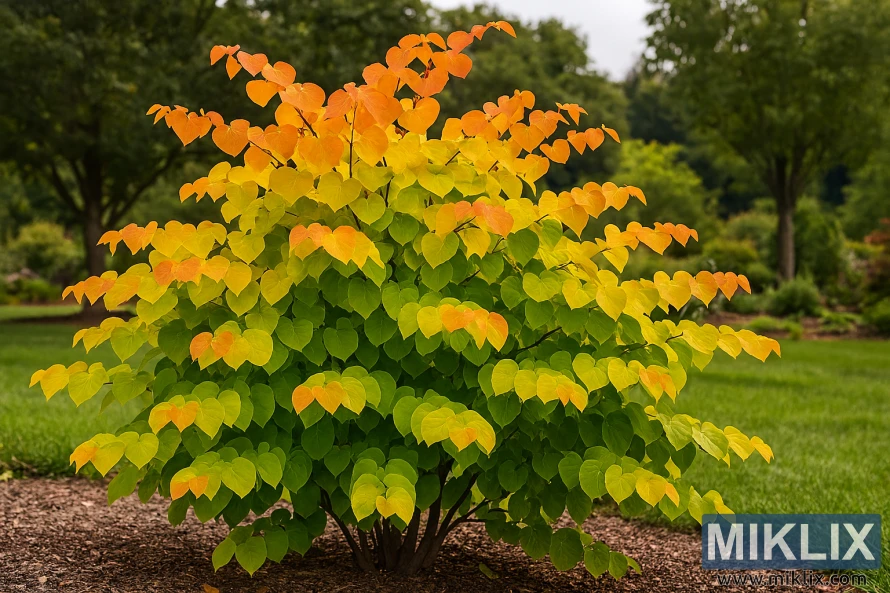
Lavender Twist Redbud
The Lavender Twist Redbud, also known as 'Covey', is a remarkable weeping cultivar that adds unique architectural interest to any landscape. This small ornamental tree features a distinctive umbrella-like form with branches that cascade dramatically toward the ground, creating a living sculpture in your garden.
- Botanical Name: Cercis canadensis 'Covey'
- Mature Size: 5-8 feet tall, 6-8 feet wide
- Flower Color: Lavender-pink
- Blooming Period: Early spring
- Foliage: Heart-shaped green leaves turning yellow in fall
- Hardiness Zones: USDA Zones 5-9
- Growing Conditions: Full sun to partial shade; moist, well-drained soil
In spring, the bare branches of the Lavender Twist become covered with lavender-pink flowers, creating a waterfall effect of color. Its compact size makes it perfect for small gardens, patios, or as a specimen plant in larger landscapes. The weeping form provides year-round visual interest, even in winter when its twisted, contorted branches create striking silhouettes.
This variety grows relatively slowly, which makes it manageable for smaller spaces and containers. It's an excellent choice for creating focal points in Japanese-inspired gardens or adding unique structural elements to formal landscapes.

Oklahoma Redbud
The Oklahoma Redbud is a standout variety known for its exceptional heat and drought tolerance, making it ideal for gardeners in challenging climates. This cultivar features deeper, more vibrant magenta-rose flowers than the standard Eastern Redbud, creating a truly spectacular spring display.
- Botanical Name: Cercis canadensis var. texensis 'Oklahoma'
- Mature Size: 15-20 feet tall and wide
- Flower Color: Deep magenta-rose
- Blooming Period: Early spring
- Foliage: Glossy, thick, heart-shaped green leaves
- Hardiness Zones: USDA Zones 6-9
- Growing Conditions: Full sun to partial shade; adaptable to various soils; drought-tolerant
What distinguishes the Oklahoma Redbud is its glossy, thicker leaves that help it withstand heat and drought better than other varieties. These leaves are more leathery in texture and have a waxy coating that reduces water loss, making this tree particularly well-suited to hot, dry regions like the Southwest.
The Oklahoma Redbud maintains a neat, rounded form and requires minimal pruning to keep its attractive shape. It's an excellent choice for xeriscaping projects, water-wise gardens, or any landscape where drought tolerance is a priority.
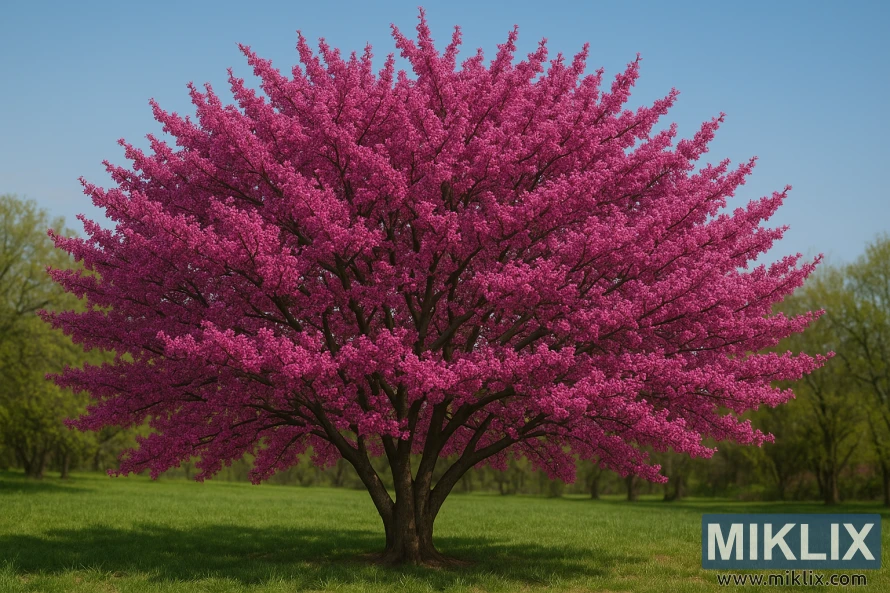
Texas White Redbud
The Texas White Redbud offers a stunning alternative to the pink and purple varieties with its pristine white flowers that create a cloud-like effect in early spring. This beautiful cultivar combines the drought tolerance of Texas redbuds with the unique appeal of white blossoms, making it a versatile choice for diverse landscapes.
- Botanical Name: Cercis canadensis var. texensis 'Texas White'
- Mature Size: 15-20 feet tall and wide
- Flower Color: Pure white
- Blooming Period: Early spring
- Foliage: Glossy, leathery, heart-shaped green leaves
- Hardiness Zones: USDA Zones 5-9
- Growing Conditions: Full sun to partial shade; adaptable to various soils; drought-tolerant
Like the Oklahoma Redbud, the Texas White features glossy, leathery leaves that help it withstand heat and drought. This makes it an excellent choice for southern gardens or any area that experiences hot, dry conditions. The white flowers create a striking contrast against the dark branches and work beautifully in both formal and naturalistic garden designs.
For maximum impact, consider planting a Texas White Redbud alongside a pink or purple variety to create a dramatic color contrast during the spring blooming season. This variety also pairs beautifully with evergreens and can brighten up shaded woodland areas.
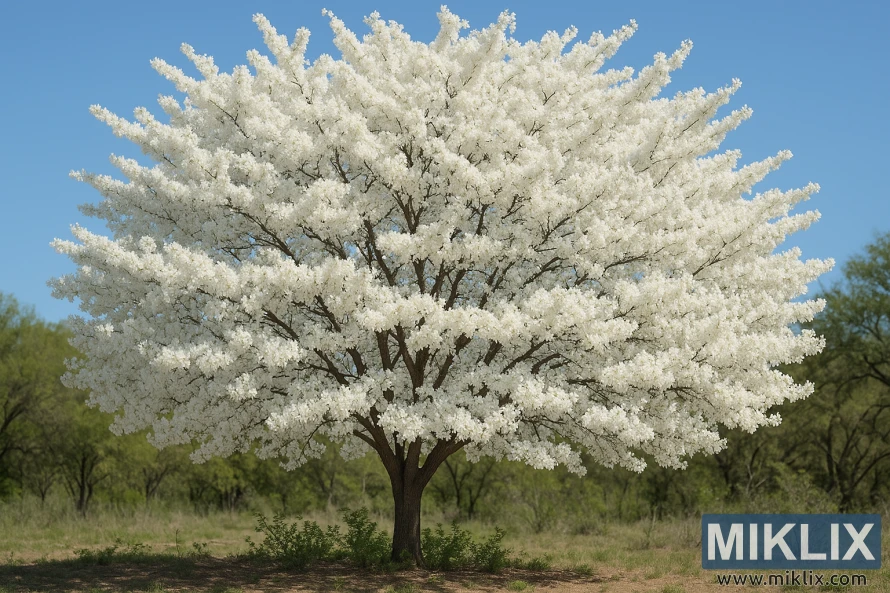
Ruby Falls Redbud
The Ruby Falls Redbud combines the best features of several varieties into one spectacular package. This unique cultivar offers the weeping form of Lavender Twist with the purple foliage of Forest Pansy, all in a compact size perfect for smaller gardens and spaces.
- Botanical Name: Cercis canadensis 'Ruby Falls'
- Mature Size: 6-8 feet tall, 5-6 feet wide
- Flower Color: Lavender-pink
- Blooming Period: Early spring
- Foliage: Heart-shaped purple leaves that mature to burgundy-green
- Hardiness Zones: USDA Zones 5-8
- Growing Conditions: Full sun to partial shade; well-drained soil
In spring, Ruby Falls produces an abundance of lavender-pink flowers that contrast beautifully with the emerging purple foliage. As the season progresses, the leaves mature to a rich burgundy-green color that provides lasting interest throughout the growing season.
This compact weeping tree is ideal for small gardens, patios, or containers. It can be used as a striking focal point, planted near water features where its form can be reflected, or incorporated into Asian-inspired garden designs. Ruby Falls is also small enough to use in large mixed containers for patios and decks.

Planting and Care Guidelines for Redbud Trees
Soil Preparation and Planting
Redbuds perform best in well-drained soil with moderate fertility. Before planting, prepare a hole that's 2-3 times wider than the root ball but no deeper than the root ball's height. This encourages roots to spread outward into the surrounding soil.
When planting, position the tree so the top of the root ball is level with or slightly above the surrounding soil. Backfill with the native soil, gently tamping to remove air pockets. Create a slight basin around the tree to help hold water, and apply 2-3 inches of mulch in a circle around the tree, keeping it a few inches away from the trunk.
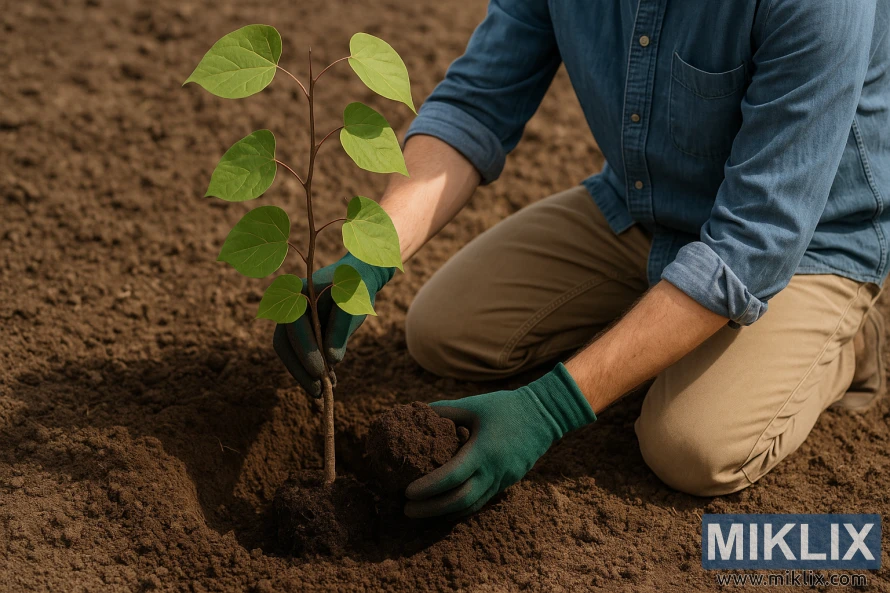
Watering Requirements
Newly planted redbud trees need regular watering during their first growing season to establish a strong root system. Water deeply once or twice a week, depending on weather conditions, rather than frequent shallow watering. After the first year, redbuds become more drought-tolerant, though they'll appreciate supplemental water during extended dry periods.
Sunlight Preferences
Most redbud varieties thrive in full sun to partial shade. In cooler northern climates, they can handle full sun, while in hotter southern regions, they often benefit from afternoon shade. The purple-leaved varieties like Forest Pansy and Ruby Falls need sufficient sunlight to develop their rich coloration but may benefit from protection from intense afternoon sun in hot climates.
Pruning Recommendations
Redbuds generally require minimal pruning to maintain their natural form. The best time to prune is immediately after flowering to avoid removing next year's flower buds. Remove dead, damaged, or crossing branches, and thin interior growth if needed to improve air circulation. For weeping varieties like Lavender Twist and Ruby Falls, selective pruning can enhance their cascading form.
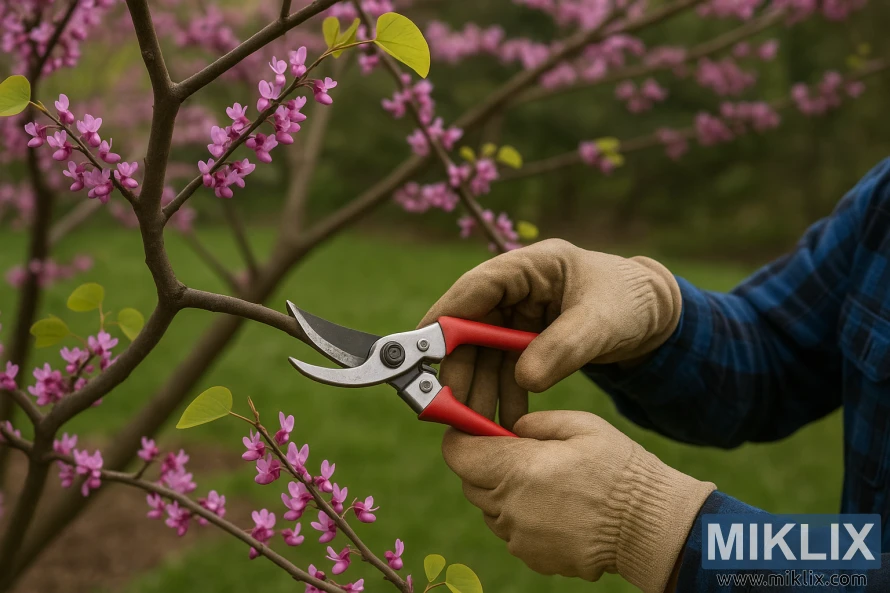
Common Pests and Diseases
While redbuds are generally hardy, they can occasionally face challenges from canker, leaf spot, and verticillium wilt. Canker is the most serious threat, causing sunken areas on branches that can eventually girdle and kill affected limbs. Proper cultural practices, including adequate spacing for air circulation and avoiding trunk injuries, help prevent these issues.
Insect pests are rarely serious but may include leafhoppers, treehoppers, and scale insects. Most can be managed with horticultural oil applications if populations become problematic.
Design Ideas for Incorporating Redbud Trees in Your Landscape
Woodland Garden Edge
Plant redbuds along the edge of wooded areas to create a beautiful transition zone between forest and lawn. Their ability to thrive in partial shade makes them perfect for woodland edges, where they can receive morning sun and afternoon shade. Underplant with native woodland wildflowers like Virginia bluebells, trillium, and ferns for a naturalistic look.

Specimen Planting
Use a unique redbud variety like Forest Pansy or Rising Sun as a focal point in your garden. Plant it where its distinctive features—whether weeping form, purple foliage, or golden leaves—can be appreciated from multiple viewpoints. Surround specimen redbuds with lower-growing perennials or groundcovers that won't compete with the tree but will complement its colors.

Small Space Solutions
For urban gardens, patios, or courtyards, choose compact varieties like Ruby Falls or Lavender Twist. These smaller redbuds can be grown in large containers or small garden beds, providing vertical interest without overwhelming the space. Their spring flowers and interesting branching patterns make them ideal focal points for intimate outdoor living areas.
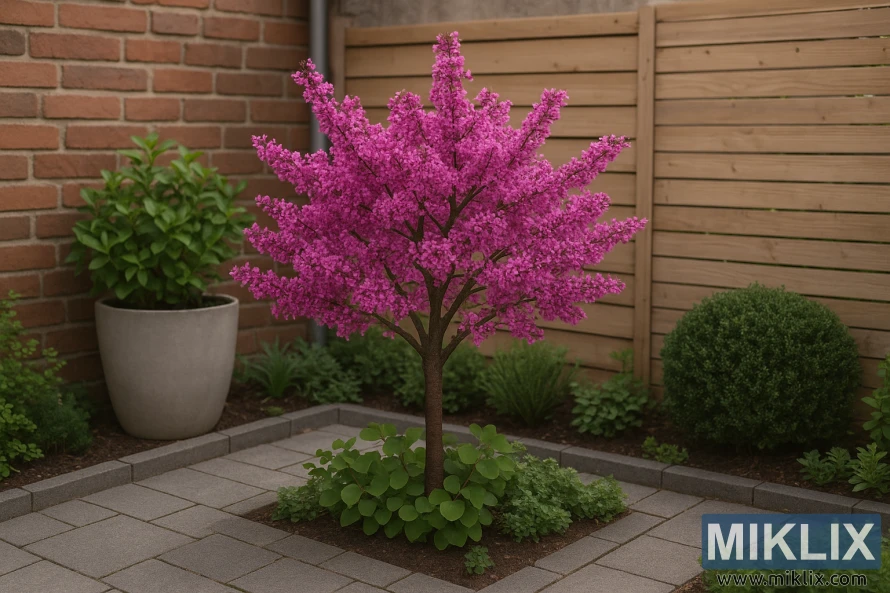
Mixed Border Backbone
Incorporate redbuds into mixed borders as structural elements that provide height and seasonal interest. Their relatively open canopy allows enough light for sun-loving perennials to grow beneath them. Pair purple-leaved varieties with silver or gold foliage plants for striking contrast, or combine white-flowering redbuds with blue and purple perennials for a cool color scheme.
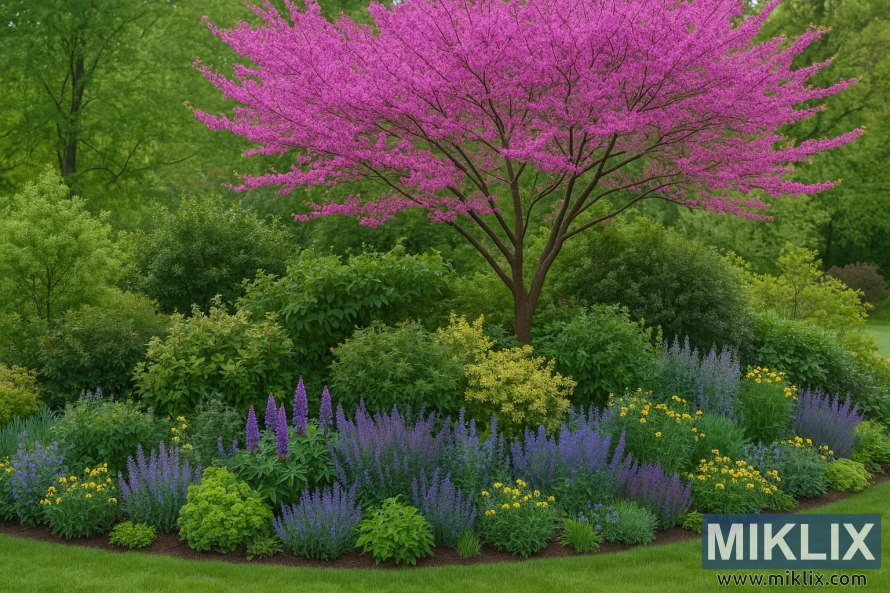
Multi-Season Interest
Design a garden vignette that showcases a redbud's changing beauty throughout the seasons. Start with spring-flowering bulbs beneath the tree to complement its early blooms, add summer perennials that look good with its mature foliage, and incorporate ornamental grasses that will provide fall and winter interest alongside the redbud's autumn color and winter silhouette.
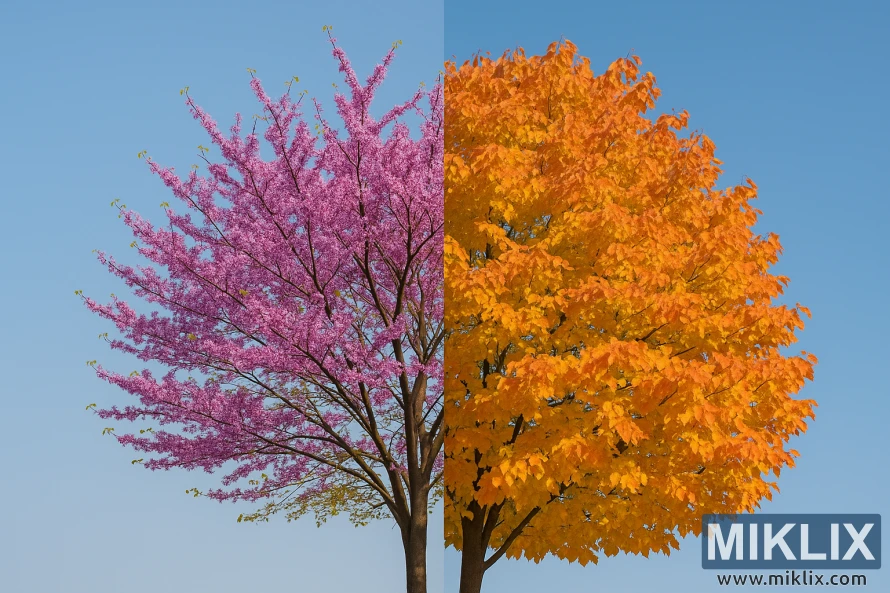
Native Habitat Garden
Create a wildlife-friendly garden using native Eastern Redbuds as a centerpiece. These trees support pollinators with their early spring flowers and can host several butterfly species. Combine with other native plants like coneflowers, asters, and native grasses to create a complete habitat garden that provides food and shelter for birds, butterflies, and beneficial insects throughout the year.
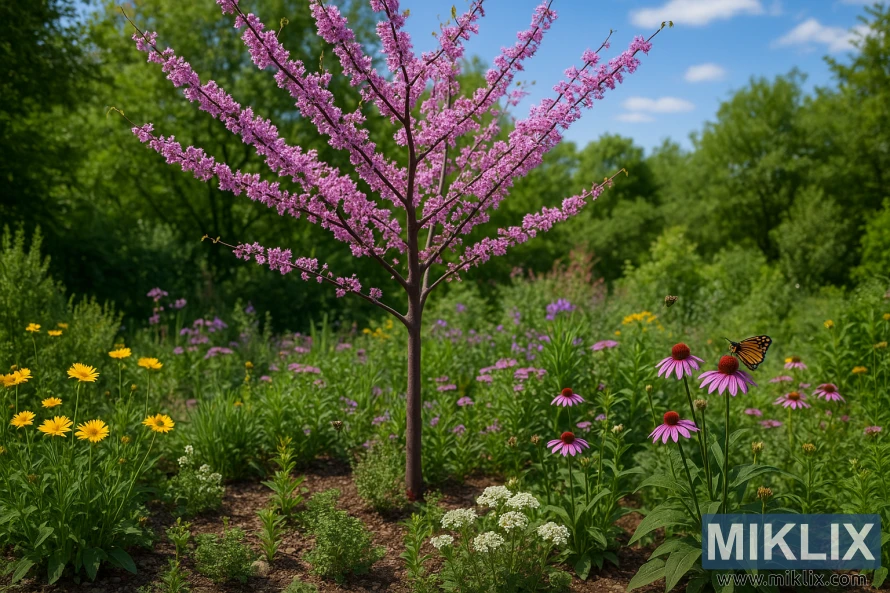
Choosing the Right Redbud Variety for Your Garden
Redbud trees offer extraordinary beauty and versatility for home landscapes, with varieties to suit nearly any garden size, style, or growing condition. From the classic Eastern Redbud to specialized cultivars with unique forms and foliage colors, these spring-flowering trees provide multiple seasons of interest while remaining relatively low-maintenance.
When selecting a redbud variety for your garden, consider your specific growing conditions, available space, and design goals. For challenging hot or dry sites, the Oklahoma or Texas White varieties offer superior heat and drought tolerance. If you're working with a small space, compact weeping forms like Lavender Twist or Ruby Falls provide dramatic impact without overwhelming the area. For those seeking unique foliage color, the Forest Pansy's purple leaves or the Rising Sun's golden-orange new growth create stunning focal points in the landscape.
Whichever variety you choose, proper planting and initial care will help establish a healthy tree that will provide decades of beauty in your garden. With their heart-shaped leaves, spectacular spring flowers, and adaptable nature, redbud trees remain one of the most rewarding additions to any landscape.
Further Reading
If you enjoyed this post, you may also like these suggestions:
- A Guide to the Best Varieties of Weeping Cherry Trees to Plant in Your Garden
- The Best Ginkgo Tree Varieties for Garden Planting
- A Guide to the Best Trees to Plant in Your Garden
